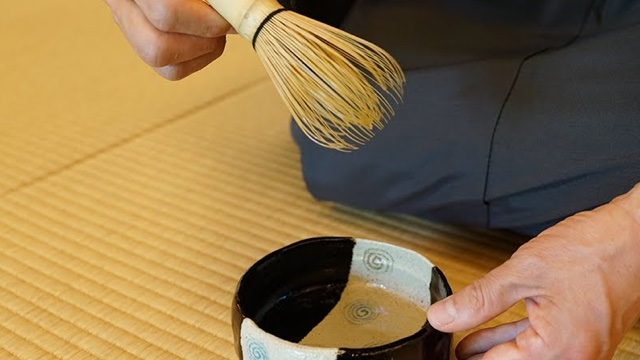
A tea whisk is a bamboo utensil used to mix green tea and hot water in a bowl.
It is made by splitting more than half of the tip of a 10 centimeter bamboo tube into small pieces and weaving them with thread. Its shape varies depending on the style and purpose, but in the Omotesenke school it is soot bamboo, and in most schools including the Urasenke school it is white bamboo (light bamboo) and Mushanokoji. Shichiku (black bamboo) is used in Senke.
The shape of the tip also differs depending on the school, but the tea whisk of Mushanokoji Senke has a straight tip, and the one with the tip of the outer tip bent inward seems to have originated in the Urasenke school where the tip was bent. , It is thought that it appeared after Rikyu, and the Kankyuan school
(Mushanokoji Senke) has the shape closest to Rikyu's style.
``Kazuho'', which is loose and soft, is used for thin tea, and ``Araho'', which has about half the number of ears and has a firm tip, is used for thick tea. There is a “long tea whisk” used for tea ceremony.
The word tea whisk was written in the Great View of Tea (1107) by Emperor Huizong of the Northern Song dynasty, as follows: The lid is thick and heavy, and the rule is powerful, but it is easy to use. The bamboo should be thick and heavy, and the bamboo should be strong and strong. This is because if it is easy to operate with force, and if the bamboo is loose and has a strong sword spine, it will not cause swell even if it is expelled too much.) In the 15th century Ming Dynasty, along with the decline of matcha, tea whisks also disappeared.
The painting of the tea whisk, which appears in the Southern Sung dynasty's Chagu Zuzan (1269) as ``Senior General,'' is long and has no distinction between outer and inner ears. It is similar to the one used in ``Furi-cha'' (Oke-cha), a type of chazuke that remains in various places, such as butter-bata tea in Toyama Prefecture, buku-buku tea in Okinawa Prefecture, and fi-cha in Kagoshima Prefecture.
The tea whisk, which is divided into outer and inner ears, as it is today, was created by Sozei Takayama (~ 1455), a vassal of the Yamana Dansho family and master master of the Kitano Renga School, at Shomyo-ji Temple, where he lived nearby. It is said that it was developed at the request of Juko Murata, who was the head priest.